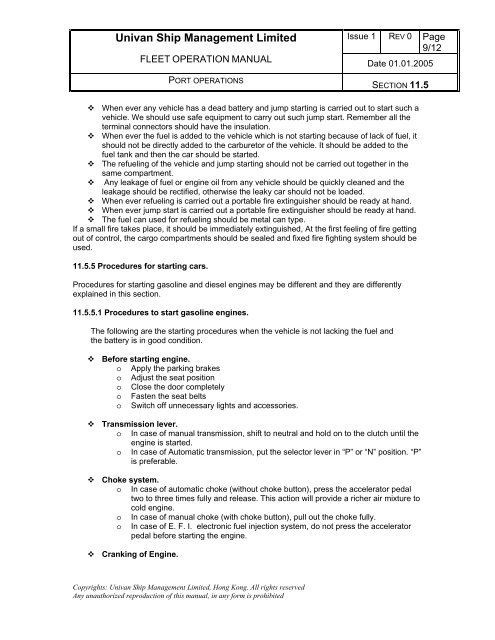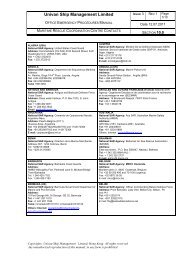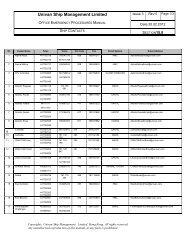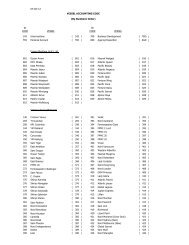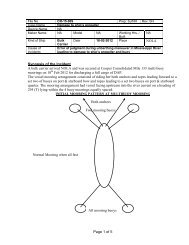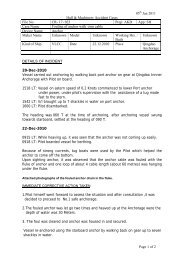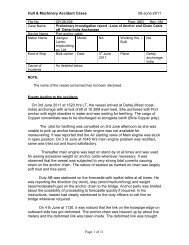Section: 11 CARGO OPERATIONS - Univan
Section: 11 CARGO OPERATIONS - Univan
Section: 11 CARGO OPERATIONS - Univan
Create successful ePaper yourself
Turn your PDF publications into a flip-book with our unique Google optimized e-Paper software.
<strong>Univan</strong> Ship Management Limited Issue 1 REV 0 Page<br />
9/12<br />
FLEET OPERATION MANUAL Date 01.01.2005<br />
PORT <strong>OPERATIONS</strong><br />
Copyrights: <strong>Univan</strong> Ship Management Limited, Hong Kong. All rights reserved<br />
Any unauthorized reproduction of this manual, in any form is prohibited<br />
SECTION <strong>11</strong>.5<br />
When ever any vehicle has a dead battery and jump starting is carried out to start such a<br />
vehicle. We should use safe equipment to carry out such jump start. Remember all the<br />
terminal connectors should have the insulation.<br />
When ever the fuel is added to the vehicle which is not starting because of lack of fuel, it<br />
should not be directly added to the carburetor of the vehicle. It should be added to the<br />
fuel tank and then the car should be started.<br />
The refueling of the vehicle and jump starting should not be carried out together in the<br />
same compartment.<br />
Any leakage of fuel or engine oil from any vehicle should be quickly cleaned and the<br />
leakage should be rectified, otherwise the leaky car should not be loaded.<br />
When ever refueling is carried out a portable fire extinguisher should be ready at hand.<br />
When ever jump start is carried out a portable fire extinguisher should be ready at hand.<br />
The fuel can used for refueling should be metal can type.<br />
If a small fire takes place, it should be immediately extinguished, At the first feeling of fire getting<br />
out of control, the cargo compartments should be sealed and fixed fire fighting system should be<br />
used.<br />
<strong>11</strong>.5.5 Procedures for starting cars.<br />
Procedures for starting gasoline and diesel engines may be different and they are differently<br />
explained in this section.<br />
<strong>11</strong>.5.5.1 Procedures to start gasoline engines.<br />
The following are the starting procedures when the vehicle is not lacking the fuel and<br />
the battery is in good condition.<br />
Before starting engine.<br />
o Apply the parking brakes<br />
o Adjust the seat position<br />
o Close the door completely<br />
o Fasten the seat belts<br />
o Switch off unnecessary lights and accessories.<br />
Transmission lever.<br />
o In case of manual transmission, shift to neutral and hold on to the clutch until the<br />
engine is started.<br />
o In case of Automatic transmission, put the selector lever in “P” or “N” position. “P”<br />
is preferable.<br />
Choke system.<br />
o In case of automatic choke (without choke button), press the accelerator pedal<br />
two to three times fully and release. This action will provide a richer air mixture to<br />
cold engine.<br />
o In case of manual choke (with choke button), pull out the choke fully.<br />
o In case of E. F. I. electronic fuel injection system, do not press the accelerator<br />
pedal before starting the engine.<br />
Cranking of Engine.


